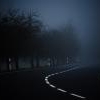Leaderboard
Popular Content
Showing content with the highest reputation on 02/22/2014 in all areas
-

Portrait Vid with SLR Magic Anamorphot/Blackmagic Pocket RAW
yannis.zach and one other reacted to elubes for a topic
Here's my video to share. Had some trouble nailing focus shooting T2.8 on some crap BMPC LCD screen, but here you go! EXPERIENCE I enjoyed using this. This is a final production prototype that I am testing. What makes it great is that the setup was really light, pretty well-built, and the learning curve is pretty easy. It can resolve sharp images, especially with the achromats. On the small LCD of the pocket camera though, getting focus can be a crapshoot. Focus peaking does not always work and I had to guess a lot. I did have to tell Ying to slow down a couple times because there was no way I could pull focus, especially on a fairly fast aperture of T2.8 and pretty much 100mm equivalent lens. Really should have a large monitor. But then it's not really a run and gun lens like I was using here though. I don't feel like anamorphic in general is normally for documentary style work. Neither is the pocket camera. Hope this helps you. Erik2 points -

Nikon D5300 Review and why DSLRs are dead for video
Aussie Ash and one other gave a reaction for a topic
Someone on Vimeo just asked me about what D5300 video settings I use. For my own benefit I decided to answer quite comprehensively (it helped me get everything clear in my head and made me realise there are still a few things I'm not sure about). I thought I'd post it here for other's benefit, and to see if anyone had anything else to offer (or suggest might be done differently). I also started a forum thread on this topic in the D5300 Vimeo group so that it can be a more permanent resource for people to see/add to: https://vimeo.com/groups/d5300/forum/topic:261998 I can't claim that these are THE best settings, but this is what has been working best for me so far: In the menu: Picture Control (profile): I'm currently of the opinion that a Neutral profile is best most of the time. I don't think Flaat is necessary, but I do think you loose out on a lot of perfectly useable detail in the shadows/highlights by shooting with the Standard profile - and for no good reason unless you don't want to grade. You can always put contrast back in post. I set all of the following to OFF in the menu: Active D-Lighting, High ISO NR and Auto ISO sensitivity. WiFi and GPS: OFF!!!! In 'Movie Settings': Frame rate: You can use whichever frame rate you want (and even switch between PAL/NTSC in the SETUP menu). I really haven't noticed a difference in quality between any of them, though I haven't done or seen any critical tests. 'Movie quality': set to HIGH. Microphone: Manual sensitivity 'Manual movie settings': ON Because I have mainly Nikkor manual-aperture primes that don't communicate with the D5300 at all, I'm always in Manual mode on the top dial. I have tried using my Tokina 11-16 with a complicated setup that involved Auto ISO, a minimum shutter speed setting and either aperture or shutter priority (can't remember which). Auto-exposure worked well in the brief house-walkthrough test I did. I'm using Auto WB quite a lot. Make sure your display is set to movie mode in live view: using the "info" button on the top of the camera, cycle through until the translucent 16:9 letterbox bars appear. Several of the important settings above can be accessed quickly using the "i" button next to the VF. You can snap out of focus assist (magnify) using the OK button. I'll leave discussion of using non-manual glass to others.2 points -
Regarding looks.... Matt's signature quote from David Lynch reminds me of an interview I read of his, or maybe heard... can't remember. The quote may actually be from the interview. But, the gist of it was an answer to a question about high definition. David Lynch was saying that he didn't much care for it at the time and felt it was waaaay too much detail. So much detail that the magic and mystery of the dreamlike illusion were being destroyed. And, that he preferred the softer constrasty look of old 16mm films where the viewer had to fill in what was in the shadows with their own imagination. Or something like that. I think there's definitely something to that.1 point
-
It definitely isn't a Sony. They told me it was a Panasonic sensor. It's definitely the one on the website or a close variant of that spec, because you wouldn't go to the effort of making a 4K capable sensor yourself (at huge cost) only to buy one from Sony. Panasonic are one of the few companies with their own CMOS manufacturing capabilities. Also physically the chip in the GM1, E-M1 and GH4 looks the same from close visual inspection.1 point
-
It's a good question. I just tested by taking a video and a still of the same scene using the neutral profile. Their respective histograms have peaks in the same places, but the video's histogram looks smoother. That makes sense given that the video was 8-bit and the still was 14-bit raw. Nothing yet. Only got my hands on it last month, but I'll let you know when I put something up.1 point
-

Nikon D5300 Review and why DSLRs are dead for video
Aussie Ash reacted to tpr for a topic
It's never worked with video on any Nikon. Pretty sure that's still the case with the D5300. You can still view a histogram even when using a lens that doesn't give you metering. Just take a test still or video, then in playback mode, press the up arrow to cycle through the information views you have enabled. By default the histogram view isn't enabled, so you have to change the settings under MENU->PLAYBACK MENU->Playback display options. I have it set up like this: ☠None (image only) ☑ Highlights ☑ RGB histogram ☠Shooting data ☑ Overview This will give you histogram, RGB histogram and blinkies views in playback. The histogram is calculated after the picture style and white balance settings are applied even when shooting a raw still, so keep that in mind.1 point -
I like the analogy of Bit depth being like rulers for this argument, I see a "10bit HD" source as one person having to produce a measurements in full 1/4 centimeter while "8bit 4k to HD" is like 4 different people measuring in full centimeters then averaging to the median of their measurements. For example let's say they have to measure a subject that is 3.25 cm. The guy measuring in 1/4 centimeters easily and accurately produces the measurement of 3 1/4cm. The four guys measuring in full centimeters would have to choose between 3cm or 4cm initially, if three of the four measured it as 3cm and one guy measures it as 4cm then their result would be accurate at 3 1/4cm. But if they ended up with a different set of initial measurements they could result in an inaccurate measurement of 3 1/2cm or 3 3/4cm. So it is possible to down sample 8bit 4k and gain more accurate color depth similar to 10bit HD but you will be introducing an opportunity to get slightly inaccurate results compared to an actual 10bit source, in fact each pixel has only a 1 in 4 chance of being accurately sampled to 10bit, this would be noticed on edges of color objects and in gradients. I don't think it's worth it as a 10bit replacement but it's definitely worth it for 4:4:4 and hey it's better than 8bit so if you're stuck with it I would down sample it. Bit-rate compression is another story, as 100mbps is not enough for 4:4:4 HD. Luckily we are bloating to 4:4:4 after recording so we are able to reset the bit-rate, allowing adequate room for the extra information to keep the same detail of the original, I would suggest 400mbps at least up to 1.6gbps if you really think it's 10bit.1 point
-
As others have mentioned, motion film cameras were never "FF", so unless you go for the feel that was created by Digital FF DSLR's in the last few years, you might as well stick with APS-C or similar for video. Besides if you want ultra-thin DoF, you can accomplish that with something like a speedbooster & sigma 18-35 f1.8 zoom. In the end, FF or APS-C doesn't mean much. There are other qualities far more important to get great video/film.1 point
-

Nikon D5300 Review and why DSLRs are dead for video
maxotics gave a reaction for a topic
Despite all the silly bickering that goes on on this forum, the fact is that we're all completely spoiled for choice and all of these cameras, even the lowly Rebels, have put a cinematic image into the hands of anybody who wants it. For the scientists amongst you (and yes, I should be working):1 point -
Nikon D5300 Review and why DSLRs are dead for video
Aussie Ash reacted to Danyyyel for a topic
I am not the biggest fan of full frame video. Perhaps because it has been overused since the Canon 5d2 when we came from one extreme (small sensor camera) to another extreme with full frame. The habit of completely blurring the background until the subject was like floating in a mist and more than often being out of focus if he moved 5 cm in front or back was really annoying. I think that the Apsc Cine 35mm look is a good balance between subject isolation and focus. If an actor is in an environment he should at least be part of it.1 point -

One Week with SLR Magic anamorphot (OM-D & Sony A7) !!! :)
Sean Cunningham reacted to Sebastien Farges for a topic
I'm going to have the pancake 40mm Konica F1.8 Hexanon. Apparently it is working good with the SLR anamorphot, more tests soon.1 point -

One Week with SLR Magic anamorphot (OM-D & Sony A7) !!! :)
Sebastien Farges reacted to Sean Cunningham for a topic
Heh, the best I can do just walking around my neighborhood would be an homage to the opening of the film Poltergeist.1 point


